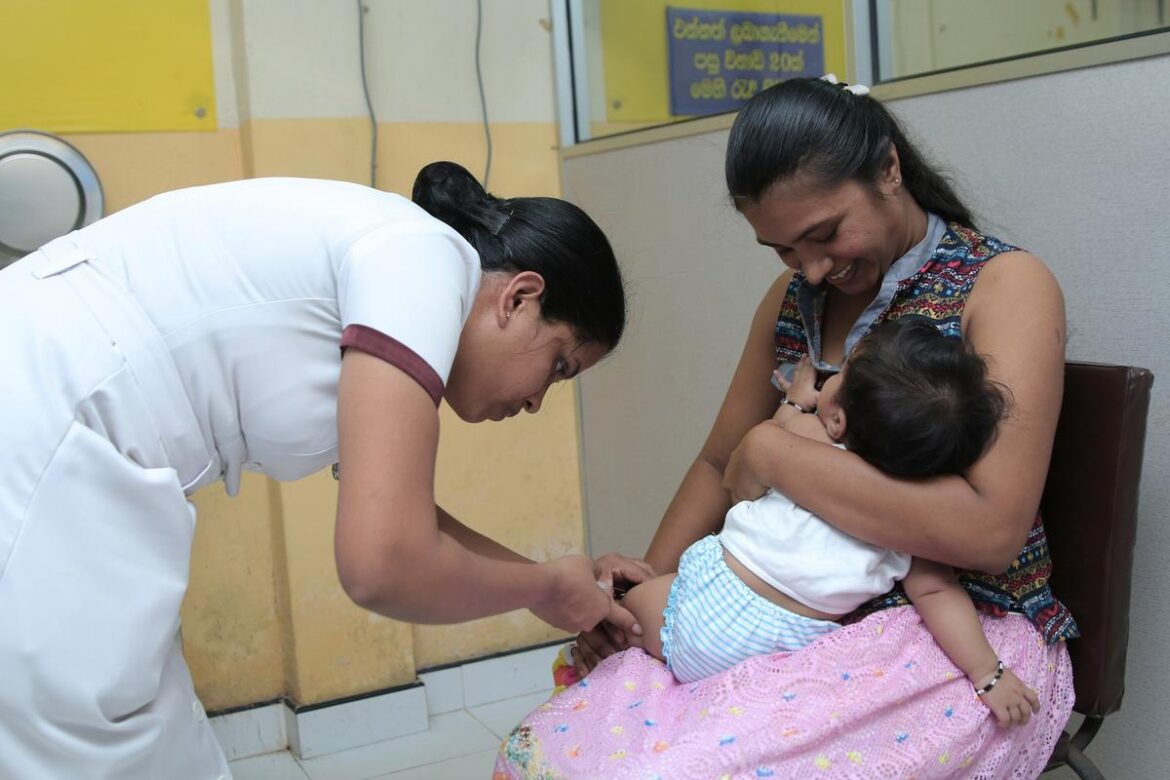South Asia Breaks Immunization Records in 2024: Millions of Children Protected
In what experts are calling a major public health milestone, new data from the World Health Organization (WHO) and UNICEF reveal that South Asia has reached its highest-ever level of child immunization. The 2024 statistics signal a strong rebound from pandemic disruptions and renewed commitment from governments, frontline workers, and communities across the region.
“This is a proud moment for South Asia. More children are protected today than ever before, thanks to tireless frontline health workers, strong government leadership, donors’ and partners’ support and the unwavering trust of families,” said Sanjay Wijesekera, UNICEF Regional Director for South Asia.
Immunization by the Numbers
Vaccination coverage in South Asia saw clear progress across multiple benchmarks in 2024:
- 92% of infants received their third dose of the DTP (Diphtheria, Tetanus, Pertussis) vaccine, up from 90% in 2023.
- 95% received their first dose of DTP, a 2 percentage point increase from the previous year.
- The number of zero-dose children declined by 27%, dropping from 2.5 million to 1.8 million.
These figures mark a strong bounce back above pre-COVID-19 immunization levels and reflect a clear regional trend: child health is front and center once again. But there’s still ground to cover. Millions of children remain under- or un-vaccinated.
Timeline of Events
- 2020–2021: Immunization efforts stalled during the COVID-19 pandemic, with millions of children missing vital vaccines.
- 2022: Recovery initiatives began, spurred by both international and local health bodies.
- 2023: DTP1 and DTP3 coverage started to recover, but remained below pre-pandemic levels.
- 2024: Strong leadership and community engagement led to the highest recorded child immunization coverage in South Asia.
Progress Across the Region
Some countries made remarkable gains this year:
- India reduced its zero-dose children by 43%, from 1.6 million to 0.9 million.
- Nepal saw a 52% drop in zero-dose children, from 23,000 to 11,000.
- Pakistan reached its highest-ever DTP3 coverage at 87%.
- Afghanistan, in contrast, struggled to maintain gains, recording a 1% drop in DTP3 coverage this year.
Measles on the Decline
South Asia also took important steps toward eliminating measles in 2024:
- 93% of infants received their first dose of the measles vaccine.
- 88% received their second dose.
- Measles cases dropped by 39%, from over 90,000 in 2023 to 55,000 this year.
These numbers are encouraging, but they remain below the 95% coverage threshold needed to prevent future outbreaks.
“It is heartening to see WHO South-East Asia Region reach the highest ever immunization rates, surpassing the pre-pandemic up-trend. We must build on this momentum,” said Dr. Thaksaphon Thamarangsi of WHO South-East Asia.
Expanding HPV Vaccination for Girls
Vaccination against Human Papillomavirus (HPV), which can cause cervical cancer, showed notable progress. In 2023, just 2% of adolescent girls received the HPV vaccine. In 2024, that figure climbed to 9%.
Key highlights include:
- Bangladesh vaccinated over 7.1 million girls since launching its HPV initiative in 2023.
- Bhutan, Maldives, and Sri Lanka also expanded coverage significantly. Sri Lanka increased its rate from 31% to 48%, a jump of 17 percentage points.
- Nepal‘s national HPV campaign, launched in February 2025, has already reached over 1.4 million girls.
- India and Pakistan are planning to launch their HPV programs later this year.
What’s Driving the Change?
Behind this year’s historic numbers lies a coordinated effort involving multiple layers of society. Some key elements include:
- Political will: Governments continue to prioritize children’s health in both budget and policy.
- Health workers: Most of them women, community health workers are reaching hard-to-access families, building vaccine trust and awareness.
- Improved technology: Better data collection and digital tools help trace children who missed their vaccines.
- Public trust: Community engagement campaigns have increased confidence in vaccines across the region.
It’s not just about shots. It’s about outreach, conversation, and persistence.
Community Response
It’s clear the results wouldn’t be possible without local buy-in. Across cities and remote villages, families made the effort to bring their children to clinics. Community health volunteers often travelled farther than ever to deliver needed vaccines.
Parents are noticing the difference. One mother in rural Bihar reportedly said, “Earlier, we thought vaccines were only for rich people. Now they come to our door. Our children are safer, and that means everything.”
Stories like these are spreading – and perhaps that’s just as powerful as the vaccines themselves.
What’s Next?
While impressive progress has been made, challenges remain. Around 2.9 million children in the region are still either under-vaccinated or unvaccinated, leaving them exposed to preventable diseases.
To close these gaps, WHO and UNICEF are urging governments to:
- Sustain funding and political focus on early childhood immunization
- Expand HPV coverage to reach more adolescent girls
- Decrease the number of zero-dose and under-vaccinated children
- Invest in the frontline workforce
- Strengthen disease surveillance infrastructure
- Improve measles coverage and prevent future outbreaks
The organizations remain optimistic that, with continued teamwork and strategy, even greater gains are possible in the coming year. Their message is simple: the right to healthcare must begin at birth—and a single dose can make all the difference.
As Sanjay Wijesekera put it, “Now is the time to push further, especially into the most rural areas, to give every child his or her right to healthcare in the earliest years of life.”
One child at a time, South Asia is rewriting the future of global health.

